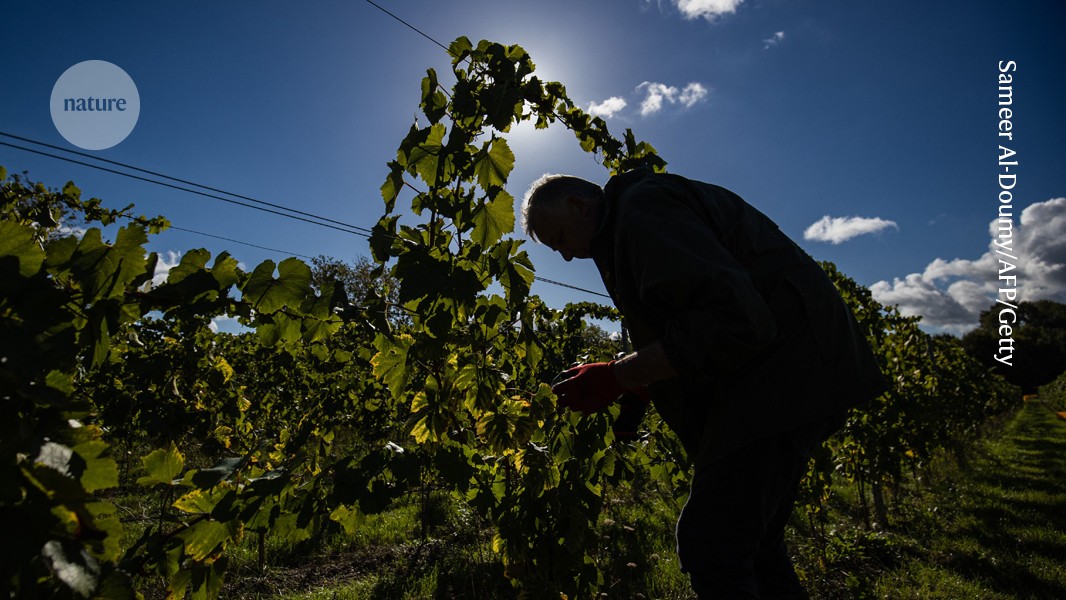Wine Grapes’ Sweetness Reveals Europe’s Climate History
Wine grapes have been cultivated in Europe for centuries, and their sweetness can provide valuable insights into the continent’s climate history. Recent research has shown that the sweetness of wine grapes is closely linked to the climate conditions in which they are grown, with warmer temperatures generally resulting in sweeter grapes.
The Relationship Between Wine Grapes and Climate
Wine grapes are highly sensitive to changes in temperature and precipitation, which can have a significant impact on their sugar content. Warmer temperatures and ample sunlight during the growing season tend to result in grapes with higher sugar levels, while cooler temperatures can lead to grapes with lower sugar levels.
Researchers have found that historical records of wine grape harvest dates and sugar levels can provide valuable information about past climate conditions in Europe. By analyzing these records, scientists can gain a better understanding of how temperatures and precipitation patterns have changed over time, and how these changes have influenced grape growth and wine production.
Studying Wine Grapes to Understand Europe’s Climate History
A recent study published in the journal Nature Climate Change used historical records of wine grape harvest dates and sugar levels to reconstruct climate conditions in Europe over the past 600 years. The researchers found that warmer temperatures in the 19th and 20th centuries resulted in earlier harvest dates and higher sugar levels in wine grapes, indicating a shift towards a warmer climate.
The study also revealed that cooler periods in the past, such as the Little Ice Age in the 17th and 18th centuries, corresponded to later harvest dates and lower sugar levels in wine grapes. These findings suggest that changes in temperature and precipitation have had a significant impact on grape growing conditions in Europe, with implications for wine production and agriculture more broadly.
Implications for Climate Change Research
Understanding the relationship between wine grapes and climate can provide valuable insights into how climate change is affecting agriculture and food production. By studying historical records of grape harvests and sugar levels, researchers can track long-term trends in temperature and precipitation, and predict how these changes may impact wine production in the future.
As temperatures continue to rise and weather patterns become more unpredictable, wine growers may need to adapt their cultivation practices to ensure the quality and consistency of their grapes. By using historical data to inform their decisions, growers can better prepare for the challenges posed by a changing climate, and continue to produce high-quality wine for future generations to enjoy.
Conclusion
Wine grapes‘ sweetness can reveal Europe’s climate history, providing valuable insights into past temperature and precipitation patterns. By studying historical records of grape harvest dates and sugar levels, researchers can track long-term trends in climate change and predict how these changes may impact wine production in the future. Understanding the relationship between wine grapes and climate is essential for adapting agricultural practices to ensure the quality and consistency of wine production in a changing climate.
FAQs
Q: How do warmer temperatures affect the sweetness of wine grapes?
A: Warmer temperatures and ample sunlight during the growing season tend to result in grapes with higher sugar levels, making them sweeter.
Q: What do historical records of wine grape harvest dates and sugar levels reveal about Europe’s climate history?
A: Historical records indicate that changes in temperature and precipitation have had a significant impact on grape growing conditions in Europe, with warmer periods resulting in sweeter grapes and cooler periods leading to less sweet grapes.
Q: How can wine growers adapt to a changing climate?
A: Wine growers can use historical data to inform their cultivation practices and make adjustments to ensure the quality and consistency of their grapes in response to changing climate conditions.




